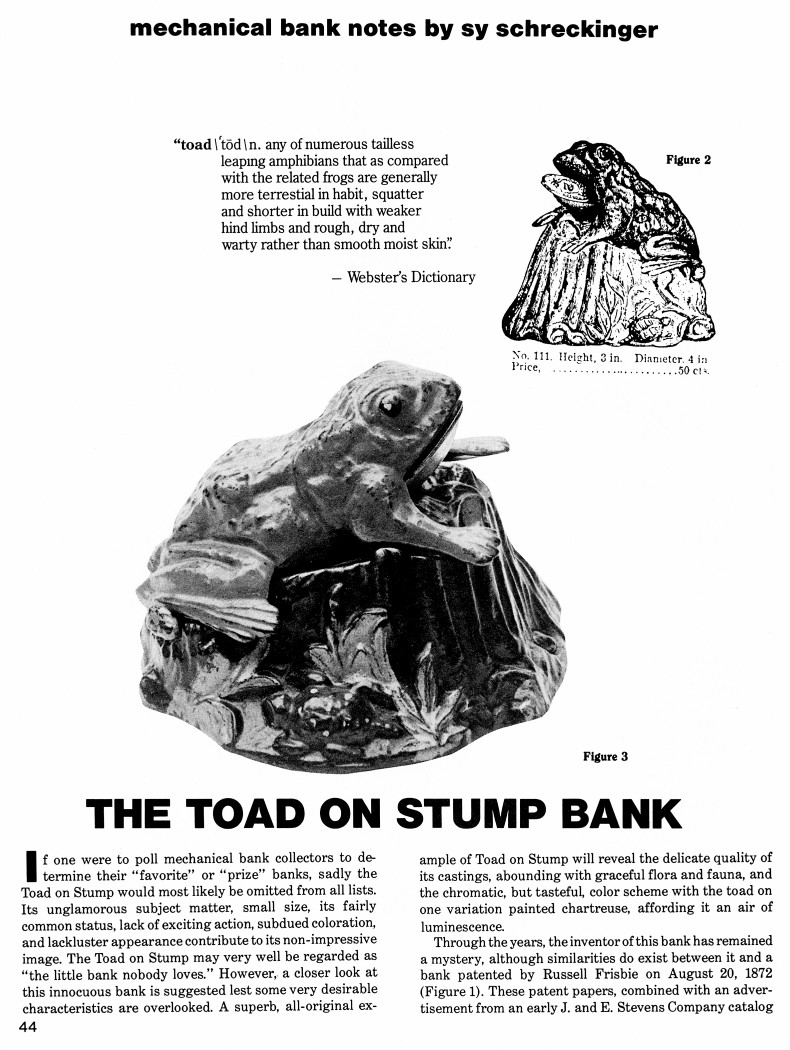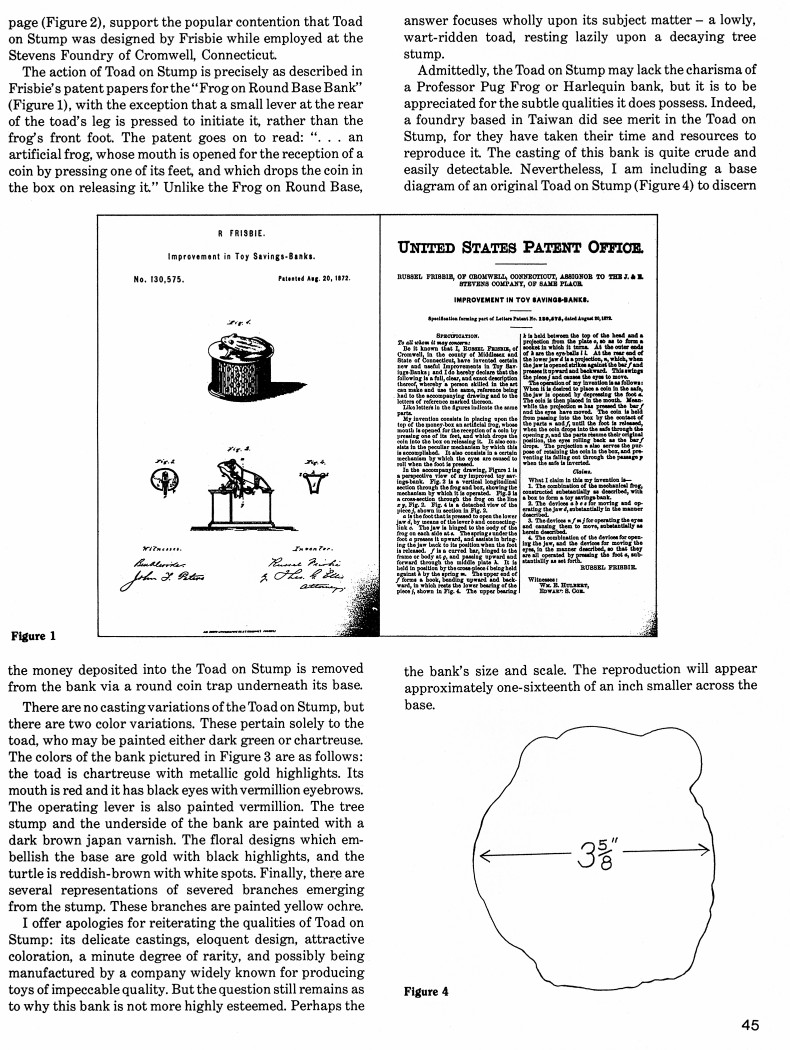|
The Toad on Stump Bank
by Sy Schreckinger – ANTIQUE TOY WORLD Magazine – July, 1987
If one
were to poll mechanical bank collectors to determine their "favorite" or
"prize" banks, sadly the Toad on Stump would most likely be omitted from
all lists. Its unglamorous subject matter, small size, its fairly common
status, lack of exciting action, subdued coloration, and lackluster
appearance contribute to its non-impressive image. The Toad on Stump may
very well be regarded as "the little bank nobody loves." However, a closer
look at this innocuous bank is suggested lest some very desirable
characteristics are overlooked. A superb, all-original example of Toad
on Stump will reveal the delicate quality of its castings, abounding with
graceful flora and fauna, and the chromatic, but tasteful, color scheme
with the toad on one variation painted chartreuse, affording it an air of
luminescence.
Through the years, the inventor of this bank has remained a mystery,
although similarities do exist between it and a bank patented by Russell
Frisbie on
August 20, 1872 (Figure 1). These patent papers, combined with
an advertisement from an early J. and E. Stevens Company catalog page
(Figure 2), support the popular contention that Toad on Stump was designed
by Frisbie while employed at the Stevens Foundry of Cromwell, Connecticut.
The action of Toad on Stump is precisely as described in Frisbie's
patent papers for the "Frog on Round Base Bank" (Figure 1), with the
exception that a small lever at the rear of the toad's leg is pressed to
initiate it, rather than the frog's front foot. The patent goes on to
read: ". . . an artificial frog, whose mouth is opened for the reception
of a coin by pressing one of its feet, and which drops the coin in the box
on releasing it" Unlike the Frog on Round Base, the money deposited into
the Toad on Stump is removed from the bank via a round coin trap
underneath its base.
There are no casting variations of the Toad on Stump, but there are
two color variations. These pertain solely to the toad, who may be painted
either dark green or chartreuse. The colors of the bank pictured in Figure
3 are as follows: the toad is chartreuse with metallic gold highlights.
Its mouth is red and it has black eyes with vermillion eyebrows. The
operating lever is also painted vermillion. The tree stump and the
underside of the bank are painted with a dark brown japan varnish. The
floral designs which embellish the base are gold with black highlights,
and the turtle is reddish-brown with white spots. Finally, there are
several representations of severed branches emerging from the stump. These
branches are painted yellow ochre.
I offer apologies for reiterating the qualities of Toad on Stump: its
delicate castings, eloquent design, attractive coloration, a minute degree
of rarity, and possibly being manufactured by a company widely known for
producing toys of impeccable quality. But the question still remains as to
why this bank is not more highly esteemed. Perhaps the answer focuses
wholly upon its subject matter – a lowly, wart-ridden toad, resting lazily
upon a decaying tree Stump.
Admittedly, the Toad on Stump may lack the charisma of a Professor
Pug Frog or Harlequin bank, but it is to be appreciated for the subtle
qualities it does possess. Indeed, a foundry based in Taiwan did see merit
in the Toad on Stump, for they have taken their time and resources to
reproduce it. The casting of this bank is quite crude and easily
detectable. Nevertheless, I am including a base diagram of an original
Toad on Stump (Figure 4) to discern the bank's size and scale. The
reproduction will appear approximately one-sixteenth of an inch smaller
across the base.
|


